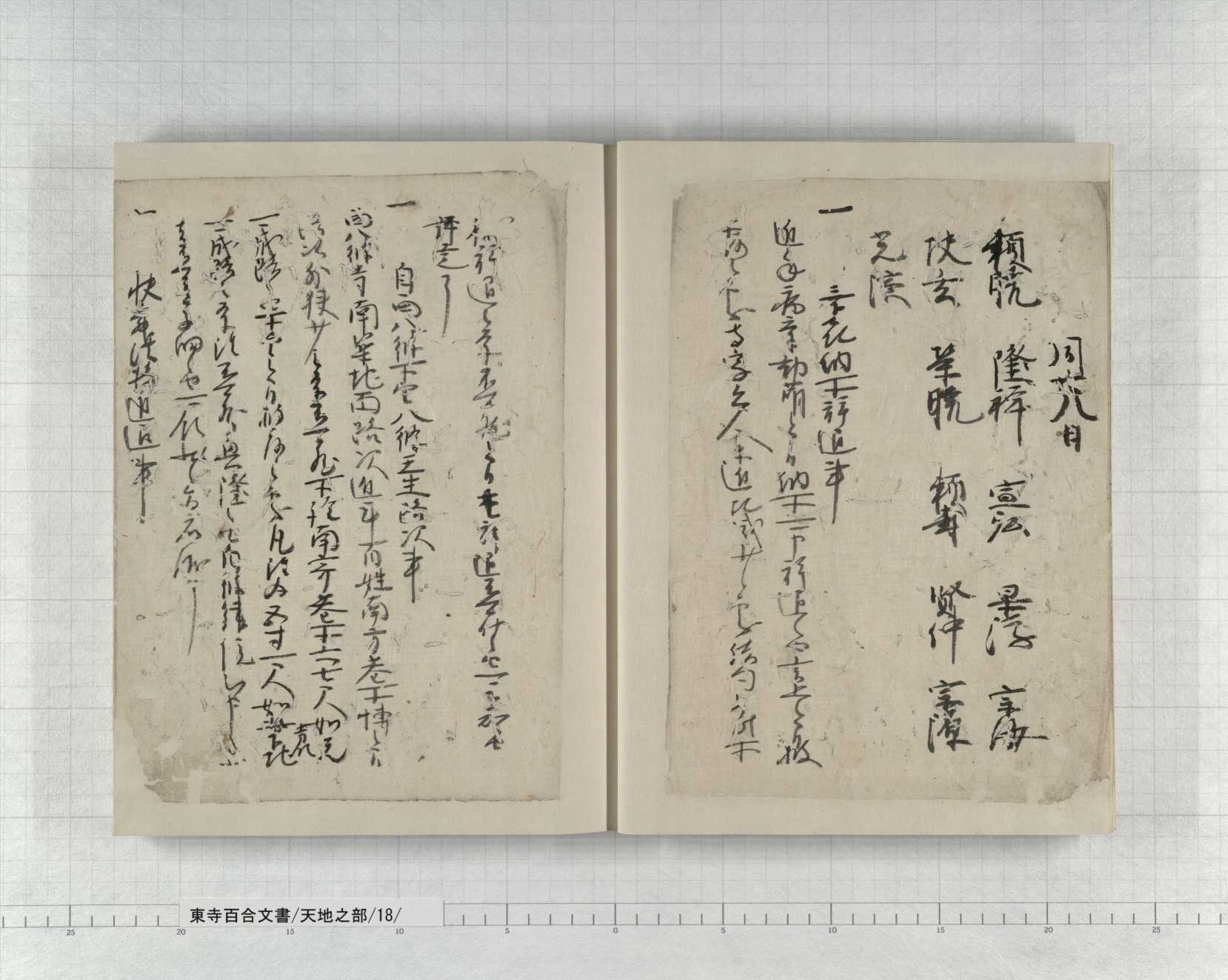It is well known that roads in Heiankyo (ancient metropolitan Kyoto) were laid out in a grid pattern. Actually, roads were turned into farm fields, inch by inch, in many parts of Heiankyo. In the previous story, “Roads turned into farm fields!? 1”, it was described how roads were tilled and Kosho spread around the intersection of the Hachijo-dori street, which ran from east to west, and the Omiya-dori street, a little to the north of the Toji temple.
A nearby temple, Hensho Shin’in, became finally impatient at the spread of Kosho, and started to petition to Toji. How did Toji respond to that? The document below is “Hyojo Hikitsuke”, minutes of a meeting that was held in Toji:

It records that a temple in Nishi Hachijo (i.e. Hensho Shin’in) protested that roads became much narrower because peasants nearby expanded Kosho, and claimed that six to seven shaku (1.8 to 2.1 meters) of Kosho should be restored to original roads.
Hachijo-dori was an Oji that originally had the breadth of 24 meters, more than half of which had been turned into Kosho. The request of Hensho Shin’in to restore only about two meters of it, so that the road would become easy to pass again, does not seem to be asking too much.
Monks at Toji discussed that, because the Koshos were made in the estate of Toji, they did not want to restore any of them into roads, even five sun (15 centimeters). However, they decided to accept the claim from Hensho Shin’in, though reluctantly, because it was very reasonable. Isn’t this a strange story? Roads must have been a public place where people traveled to and fro. When were they included into the estate of Toji?
It seems that people started to till and turn parts of roads in Heiankyo into farm fields as early as at the end of the Heian period. Peasants cultivated and developed roads into farm fields without authorization. Then they began to donate the tilled land and pay land tax to Toji and other major temples or to nobles, so that their ownership of the land would be certified. In such Koshos, not only farm fields were developed, but also small stores gathered to formulate a market, and houses were built.
The document below shows a selling ticket for a Kosho, and the attached diagram of the Kosho. The farm products (rice, barley, rush grass, etc.) are listed, and the amount of manure is also recorded. This indicates that Koshos were even traded, just like other private properties!


Such activities appear to be quite egocentric on public roads, but were also clever utilization of unused land, and reflect a part of metropolitan life in Heiankyo.
Although each block of Kosho did not have a large area, the accumulated land tax must have reached a fairly large amount. Toji even established “Kosho Bugyo”, a position for managing land tax from Koshos, and included it into its budget planning. It seems that land tax from Koshos was allocated to repair fees for the temple halls. This is why monks at Toji were reluctant to accept the restoration of roads, even though they recognized that the spread of Koshos annoyed people.
The ancient metropolitan Kyoto was developed in many ways, through the interacting intentions of different parties, including common people’s ideas and actions, and benefits of temples and powerful figures. The medieval Kyoto was not only a neatly developed city, but also contained chaotic marks of history. Such marks may be why Kyoto remains a popular sightseeing spot frequented by people from around the world.
How Koshos in the medieval Kyoto have changed? It may be interesting to visit the sites of Kosho.